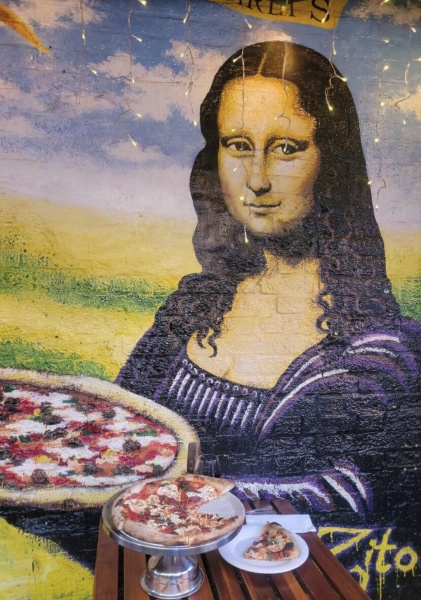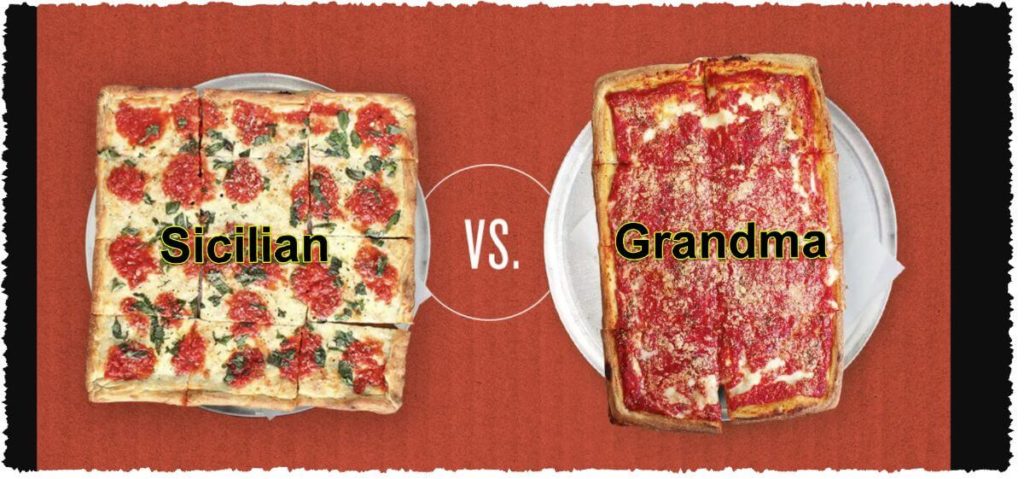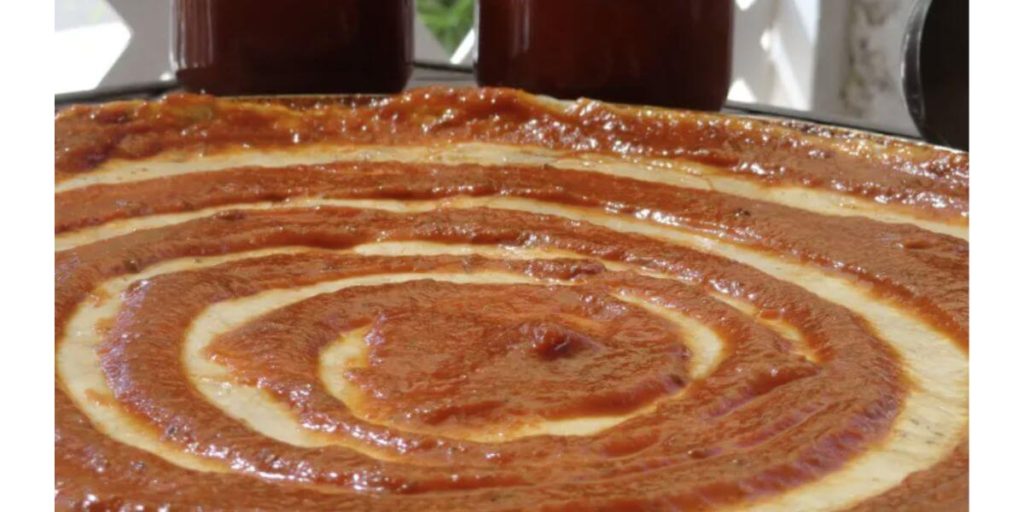
New York pizza! There’s nothing quite like it when you’re in a rush, starved because somehow your sightseeing went right through lunchtime, or you just want to make your food budget stretch a little further. It’s at those moments that the perfect New York pizza is exactly what you need.
Good pizzerias are institutions in NYC. Many have been perfecting the art of combining dough, sauce and cheese for generations. Did you know the first pizzeria in the US is still doing amazing business in Manhattan’s NOLITA (North of Little Italy) neighborhood?

Hungry? Yeah, me too. Before we run out to tickle our taste buds and fill our tummies, let’s make sure we understand what we’re getting into. There are all kinds of pizzas in NYC. In order to pick the right slice, you need to understand how to differentiate between all those kinds of pizza.
When we first arrived in NYC I ordered a slice of pizza that, while good, wasn’t quite what I was hoping for. Who knew ordering pizza in New York could be so confusing?? After all, it’s just pizza, right? Oh, but there’s more to pizza in NYC than that! The perfect New York pizza is out there, you just need to find it. Here’s how.
“Regular” or “New York” pizza is a round pie made up of dough, cheese and tomato sauce. That’s it. It has a thin, crisp yet flexible crust you can fold, which is how many New Yorkers eat their pizza (Remember “forkgate“?)
You can order this style of pizza with other toppings, but, if you order “a slice”, you’ll get a triangle of what most Americans think of as cheese pizza. This isn’t like any cheese pizza you’ve had in any other part of the country, however. Honestly. Dough, tomatoes, cheese and a few herbs can be heaven in the right hands. And New Yorkers have been perfecting the art of pizza making for generations.
Regulars have a thin, crisp crust that is slightly charred on the bottom and chewy where crust and sauce meet. That whisper-thin layer of chewiness is what keeps the crust from snapping in half when you fold it. Without it you could be wearing your pizza.
Topping this wonderful crust will be just enough cheese, sauce, a little grease, and big bubbly edges. Yumm! Here’s Eater’s list of the most iconic pizzerias in NYC. You’ll find the best regular slices there.
Ever hear of a Sicilian pizza? You haven’t lived until you’ve tried it. Sicilian pizza, despite the name, is not a southern Italian dish. It was actually developed in Manhattan’s Little Italy. The local pizzerias kept tweaking their recipes over the generations, and this pizza is the result.
Sicilian pizza is cooked in a square pan with plenty of olive oil to give the crust a nice crunchy bottom. The dough is then allowed to rise, or “proof,” in the pan before it’s topped and baked. This process results in Sicilians having a soft layer on the very bottom of the crust, similar to focaccia bread, followed by a soft bread middle and a moist, chewy layer on top.
Interested in trying the best Sicilians? Here’s a list FourSquare keeps updated to help you find it.

Grandma-style pizza developed on Long Island by Italian Nonnas (“grandmas”) who needed to feed large families for very little money. In the late 60s and early 70s, pizzerias in the NYC area began offering this “new” type of pizza as a menu item, and it quickly took off.
Grandma-style pizza is a home-grown Sicilian pizza. Like Sicilians, the dough of Grandma pizzas is stretched into an olive-oil lined pan. However, the Grandma dough is given only a short time to proof, creating a thinner and denser crust than a traditional Sicilian pie. Grandmas also differ from their Sicilian cousins in that the cheese is added before the sauce. Yup, you read that right. It’s inverted. This protected the cheese from being overcooked in home ovens.
Want to try a Grandma? Here’s the current listing of the best ones according to Yelp.
A “red pie” is what it sounds like: a pizza topped with an uncooked tomato sauce, typically made of crushed tomatoes. The sauce should be savory and bright like the sauce on the Sicilian and Grandma pizzas above. Not brownish red, as made famous by Chef Boyardee, shown below. Good acidic tomatoes, a pinch of salt, a hint of sweetness, and perhaps a touch of oregano are all a good pizza sauce needs.

“White pies” don’t have sauce but typically include dollops of ricotta cheese. Depending on the pizzeria, the sauce may be seasoned with herbs and sometimes sugar, but the key is that it’s uncooked prior to going in the oven.
The standard cheese used in NYC pizzerias is low-moisture mozzarella. Ideally, there should be just enough of it to balance out the sauce and the crust. No more. When you have a stellar sauce and great dough, you don’t want to drown it in cheese. Finally, the cheese should be fully melted, just starting to brown, and it should mingle with the sauce, not form a thick blanket over it.
There’s no surefire way to tell whether a pizza is going to be great until you actually take that first bite. There are, however, a few indicators of potential pizza greatness you can look for.
Employees who seem to care: Good pizza is one of those foods that can only be made by someone who is passionate about what they’re doing. If the person behind the register is gnarly and gruff, there’s a good chance the person making the pizza is less than passionate about their product, too.
Not too much cheese: You want the top of your pizza to have a mottled, red/white/orange appearance, NOT a solid blanket of white.
See how they’re stretched: Pizza dough should be stretched on a lightly floured surface by hand, not using a rolling pin or stretcher.
Check the crust char: The bottom of a pizza should have a wide range of colors on it, from pale brown to nearly black. It’s this variation that gives New York pizza crust its great flavor. If the crust is a solid monotone brown all over, it is going to be either dry or doughy and lacking in flavor complexity.
It’s hard to see the bottom of a slice before you buy it, but you can examine the outer edges of the slices on display. If there’s not at least a little char on those edges, there’s probably none underneath either.
Finally, let’s talk about reheats. You’re going to encounter this at most slice pizzerias. “Slice pies” have to be precooked for quick service. If a slice pie has been sitting long enough to cool, the counter person will throw it back in the oven to warm it up before serving it to you. Some pizzerias even under-bake their pies slightly, so the final slice retains it’s freshness and chewiness on reheat. You can specify you want your slice “warm” or “hot.”
There you have it. You’re now well-armed to go in search of the perfect New York pizza.
Leave a Reply